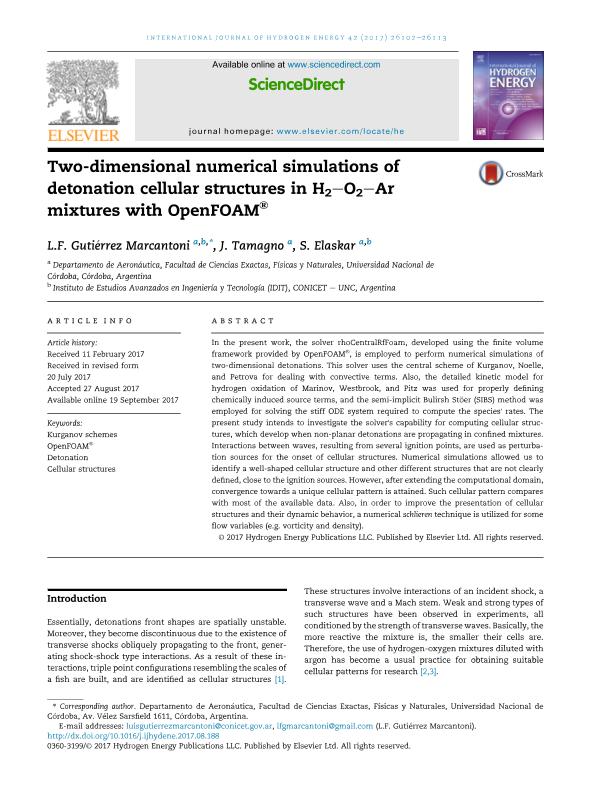Artículo
Two-dimensional numerical simulations of detonation cellular structures in H2–O2–Ar mixtures with OpenFOAM®
Fecha de publicación:
09/2017
Editorial:
Pergamon-Elsevier Science Ltd
Revista:
International Journal of Hydrogen Energy
ISSN:
0360-3199
Idioma:
Inglés
Tipo de recurso:
Artículo publicado
Clasificación temática:
Resumen
In the present work, the solver rhoCentralRfFoam, developed using the finite volume framework provided by OpenFOAM®, is employed to perform numerical simulations of two-dimensional detonations. This solver uses the central scheme of Kurganov, Noelle, and Petrova for dealing with convective terms. Also, the detailed kinetic model for hydrogen oxidation of Marinov, Westbrook, and Pitz was used for properly defining chemically induced source terms, and the semi-implicit Bulirsh Stöer (SIBS) method was employed for solving the stiff ODE system required to compute the species' rates. The present study intends to investigate the solver's capability for computing cellular structures, which develop when non-planar detonations are propagating in confined mixtures. Interactions between waves, resulting from several ignition points, are used as perturbation sources for the onset of cellular structures. Numerical simulations allowed us to identify a well-shaped cellular structure and other different structures that are not clearly defined, close to the ignition sources. However, after extending the computational domain, convergence towards a unique cellular pattern is attained. Such cellular pattern compares with most of the available data. Also, in order to improve the presentation of cellular structures and their dynamic behavior, a numerical schlieren technique is utilized for some flow variables (e.g. vorticity and density).
Palabras clave:
Cellular Structures
,
Detonation
,
Kurganov Schemes
,
Openfoam&Reg;
Archivos asociados
Licencia
Identificadores
Colecciones
Articulos(IDIT)
Articulos de INSTITUTO DE ESTUDIOS AVANZADOS EN INGENIERIA Y TECNOLOGIA
Articulos de INSTITUTO DE ESTUDIOS AVANZADOS EN INGENIERIA Y TECNOLOGIA
Citación
Gutierrez Marcantoni, Luis Felipe; Tamagno, Jose Pedro; Elaskar, Sergio Amado; Two-dimensional numerical simulations of detonation cellular structures in H2–O2–Ar mixtures with OpenFOAM®; Pergamon-Elsevier Science Ltd; International Journal of Hydrogen Energy; 42; 41; 9-2017; 26102-26113
Compartir
Altmétricas




